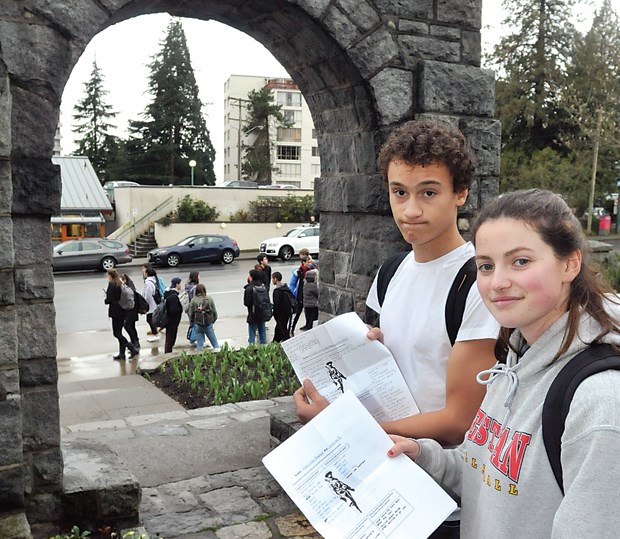There are 91 names inscribed on the cenotaph in West Vancouver's Memorial Park.
They identify the fallen soldiers from the community who fought in the First and Second World Wars. But with only first initials and surnames displayed, there is little the casual observer can glean about these people who lost their lives decades ago.
In the lead up to the 100th anniversary of the Battle of Vimy Ridge, West Vancouver Memorial Library is launching a new initiative that seeks to bridge that disconnect. Research to Remember is being funded by a grant from the World War Commemorations Community Fund from the Department of Canadian Heritage, and is being run in partnership with West Vancouver Schools and the Royal Canadian Legion.
The program aims to give participants a tangible connection to 24 of the soldiers commemorated on the West Vancouver cenotaph through the exploration of primary source documents.
Thanks to the grant money, the library was able to hire a professional researcher to track down the material, which includes medical records, personal correspondence, records of service, casualty notifications, photographs, lists of personal effects, and more.
The first phase of the project is focusing on West Vancouver secondary school students.
Approximately 200 high schoolers in grades 10 to 12 will visit the library throughout the month of March to conduct historical research based on the primary source packages. They will also visit the nearby cenotaph to see the names of the soldiers they've learned about.
The library's youth department head Shannon Ozirny was pleased with the student response following the first research session.
"They were totally rapt the entire time," she says.
Second World War veteran and Branch 60 Royal Canadian Legion chairman Harry Greenwood spoke to the students first and for the rest of the program the teens worked handson with the provided documents.
"They're learning about the difference between gleaning facts from a document versus making inferences about a person from a historical document, and it also lets them make a bit more of a personal connection when they have everything right in front of them," Ozirny says.
The goal is to connect the learners with local history on a personal level.
"We really want the students to connect with the people who were their age from West Vancouver who went and fought in the war. A lot of these soldiers actually went to West Van secondary themselves, so there's a pretty direct connection there."
The second phase of Research to Remember will involve the whole community. Starting in early May, the primary source packages, along with accompanying research questions, will be available to the public. Currently, information has been gathered on just 24 soldiers.
"We picked 12 from each war that had really rich document trails," Ozirny explains. But the hope is to learn more about the other 67 names over time.
"It's our goal to hopefully capture the stories of all 91 soldiers on the cenotaph," she says. "It's really exciting to think about how high school students in West Van could help us with that."
Once the pilot project wraps up, the library anticipates Research to Remember will become an annual program for secondary schools every November.
* * *
A press release from Heritage BC noted that its online world war monuments and memorials launched March 31.
The press release noted that this first-phase launch, to be followed by more than 100 more sites in April, features war memorials from diverse communities, rural and urban, including Dawson Creek, White Rock, Ucluelet and Sparwood.
The release stated that among the more unique stories submitted for inclusion was the Blue Hydrangea memorial in Chilliwack. During the Second World War every time the community was notified of the death of a member of the air force in the war, the RCAF Women’s Auxiliary would plant a blue hydrangea bush outside Chilliwack High School (blue for the air force uniform colour). By the end of the war in 1945, there were 49 bushes.
The plants got neglected over the decades. The high school became a middle school and when the grounds were altered the flowers were re-planted around the flagpole. Only a handful of deteriorated hydrangeas survive there today. The local RCAFA office in Chilliwack is now planning the re-establishment of this colourful memorial in collaboration with the school board and principal.
These stories and other war memorial sites can be viewed on Heritage BC’s World War Monuments & Memorials Map of B.C. at heritagebc.ca/war-memorials-in-bc.



